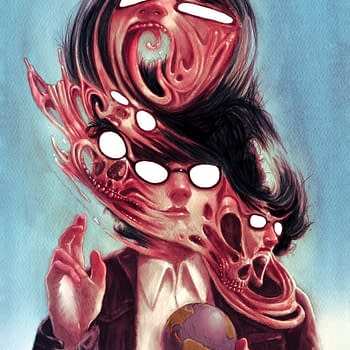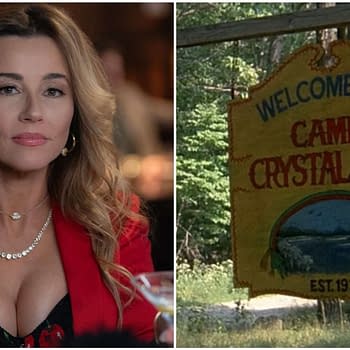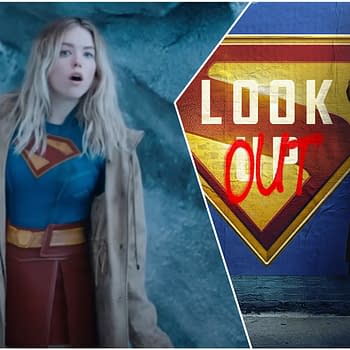Posted in: Movies | Tagged: Alexandro Jodorowsky, character designs, courts, dune, entertainment, france, jean girad, law, lean-marc l'officier, moebius, storyboards
Camera One To Return Dune Production Artwork To The Estate Of Moebius

Which is why it seems so fitting that he should choose to translate and analyse a French legal decision regarding the estate of Jean Giraud and a French film production company over Alexandro Jodorowsky's failed Dune adaptation.
Jean-Marc translates,
On 3 September 2015, the Tribunal de Grande Instance of Paris (3rd chamber 4th Division) issued a judgment in the matter of a lawsuit pitting the Estate of comic artist Jean Giraud aka Moebius against French film production company Camera One regarding the ownership and exploitation of the original art (storyboards and characters designs; over 250 pieces in total) created by Giraud in 1974 for the planned film adaptation of Frank Herbert's novel Dune, to be directed by Alexandro Jodorowsky, but which never got off the ground.
After Giraud's death in 2012, Camera One had refused to return the art when requested to do so by Giraud's widow, Mrs. Isabelle Giraud, on the grounds that it belonged to them. Mrs. Giraud and her two children then went to court to ask for the return of the art, as well as financial compensation for several alleged violations under French moral and property rights law.
The action also involved the Moebius Production Jean Giraud (MPJC) company set up by Mrs. Giraud, the Court-appointed Executor currently in charge of administering the Estate, and the artist's two children born from his first marriage, who made no claims against Camera One.
In her first claim, Mrs. Giraud asserted that the post-mortem publication of some of the art that Camera One had licensed (presumably for the recent film documentary about the Dune project) was a violation of the artist's moral rights, which were now hers to exercise as legatee. The Court disagreed and rejected her claim on the basis of Article L.121 of the French Intellectual Property Code which states that the exercise of moral rights, including the right of publication of a work not yet published at the time of the artist's death, is exclusively reserved to the lawful heirs (except if otherwise stipulated in a will), that is to say the Executor (if any), and then in the following order, the children, the spouse, and then the other heirs and legatees. In applying this principle, the Court held that the right of publication claimed by Mrs. Giraud in her capacity as legatee actually belonged to the artist's children, who, in this specific instance, had made no claim under the law.
The Court also rejected Mrs. Giraud's claims for financial compensation based on alleged loss of income resulting from Camera One's failure to exploit the art by noting the absence of any publication projects during the artist's lifetime, or since his passing, and the fact that Giraud had never sought the return of his art until 2011.
However, the Court granted the plaintiff's request regarding the ownership of the art and ordered Camera One to return it, although not to Mrs. Giraud, but to the Court-appointed Executor.
In this respect, the Court noted that Camera One could not produce any signed contract between Giraud and itself, nor any proof that it had paid Giraud for the making and/or purchasing of the art. In the absence of such documents, the Court took the view that the art had merely been "left in deposit" with the producers (under the terms of Article 1927 of the French Civil Code), purely in order to facilitate the making of the motion picture, and that there was no evidence to suggest an actual transfer of ownership; hence its decision to order the return of the art to the lawful party.
In terms of analysis, Jean-Marc tells us,
From a legal standpoint, this is not ground-breaking. In order to determine if the use of the art in the documentary was or not a violation of moral rights, the children, not the widow, would have had to make such a claim, but they did not. So the court did not have to decide. As for the ownership of the original art, had Camera One in 1974 properly contracted and paid Giraud, its own claim to ownership would likely have been held valid; but (amazingly) it did not, so it really had no legal leg to stand on. For those not familiar with French Inheritance laws, one will note that the lawful order of succession, i.e. children first, not spouse, is reaffirmed here.
You can read more about Moebius and the Dune production that never was, here.




















